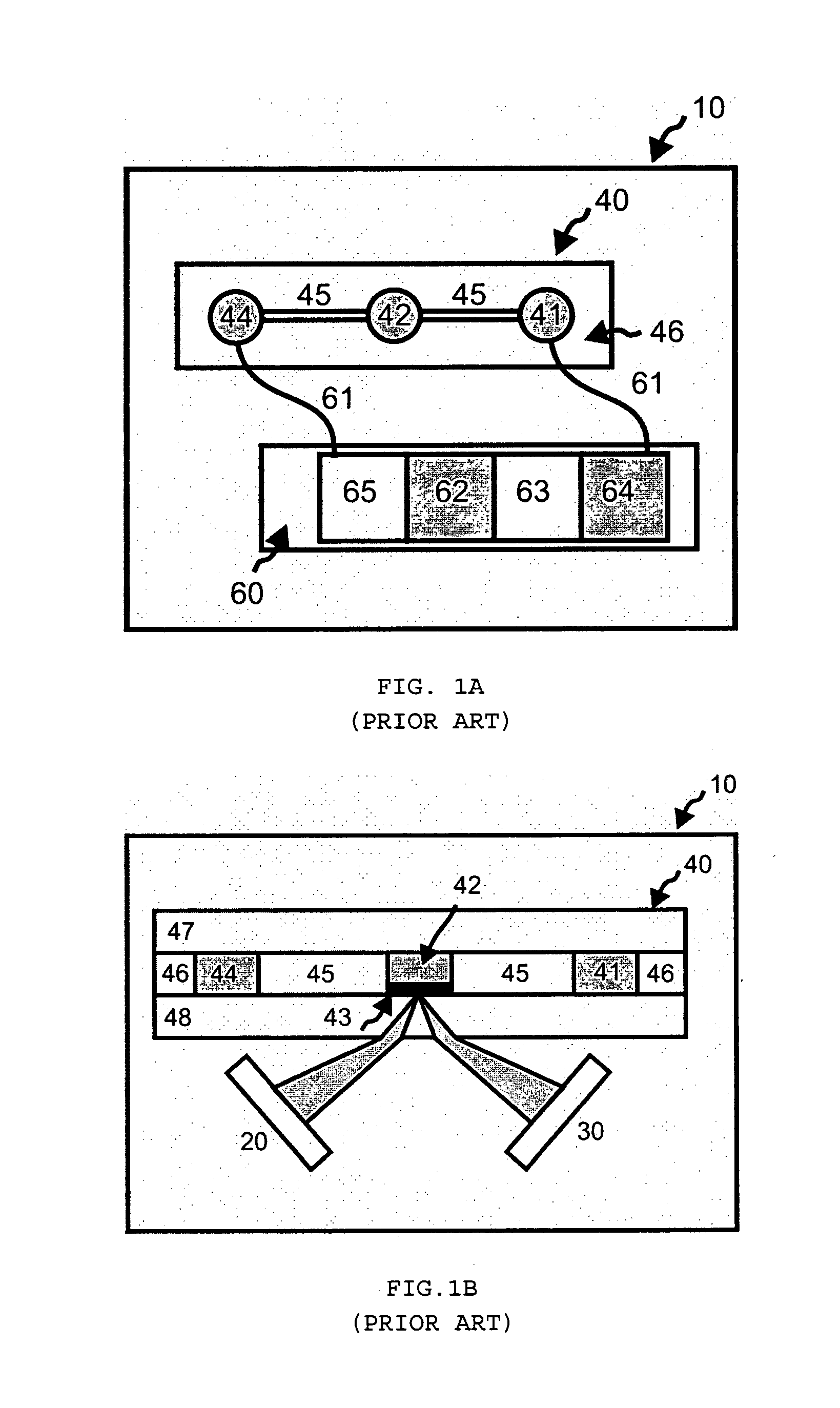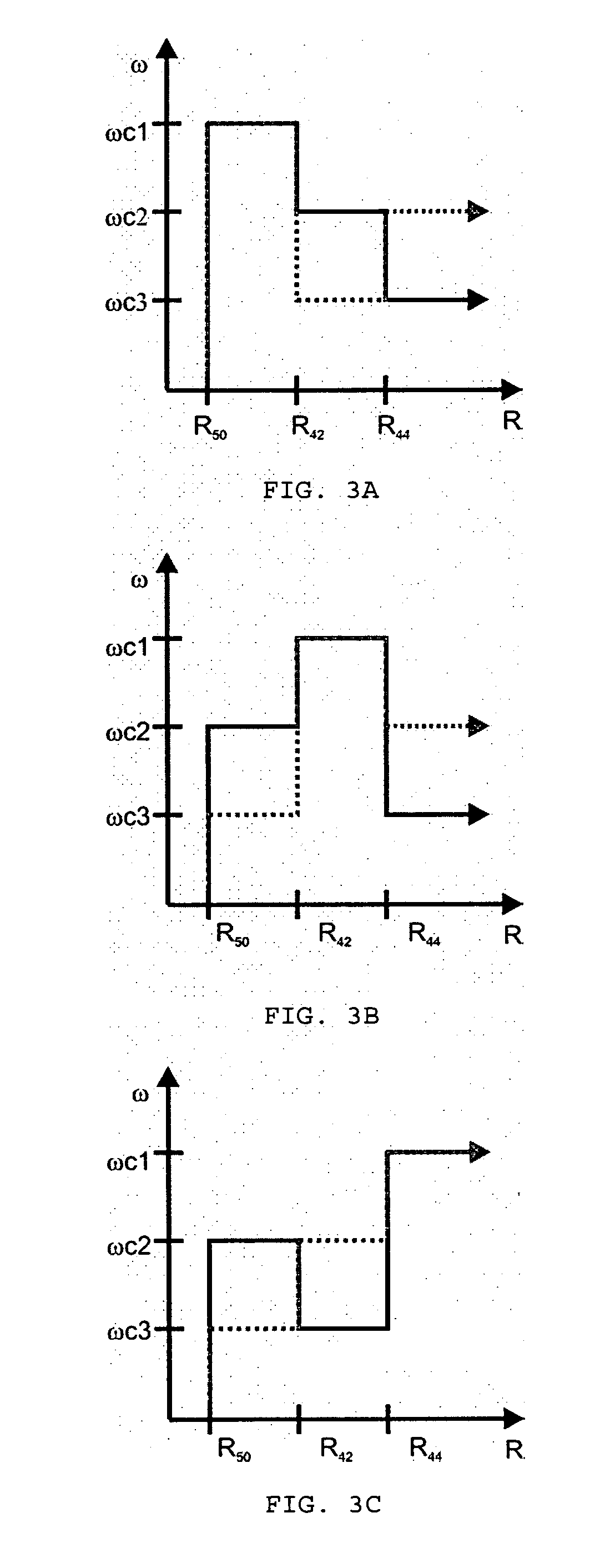Detection Device Based on Surface Plasmon Resonance Effect
- Summary
- Abstract
- Description
- Claims
- Application Information
AI Technical Summary
Benefits of technology
Problems solved by technology
Method used
Image
Examples
first example
[0072]Let us consider as a first example the case where the sum of the total volumes for the channels 45, valve 50 and DZ 42 is smaller than the volume of initial reservoir 41. The initial reservoir 41, the valve 50, the DZ 42 and the final reservoir 44 are hydrophobic and the channels 45 are hydrophilic.
[0073]The system preferably operated in a regime with small angular accelerations. High angular accelerations may lead to disruption of the fluid column and this jeopardizes the desired flow behaviour and hence is considered an unfavourable scenario of the present invention.
[0074]With the above-mentioned configuration, the system presents three barriers to the advancement of the fluid front (meniscus) as a function of the rotational velocity at (i) the entrance of valve 50; (ii) the entrance of DZ 42 and (iii) the entrance of final reservoir 44. The value of each one of these critical rotational velocities may also be adjusted through (iv) the position of each of these elements with...
second example
[0091]The previous example demonstrates that the present invention may be used to build and operate a SPR sensor 10 that does not require the use of external pumping or fluid control elements. In most practical cases, the use of the SPR sensor 10 for quantitative detection of chemical and / or biological events occurring at the DS 43 requires the use of different fluids flowing in and out of the DZ 42 in a sequential manner. These different fluids may be required for different functions (e.g. surface cleaning, fluid mixture, use of a secondary antibody, etc.). On the other hand, the process described in the first example implies a measure of the SPR effect in a dry surface right after fluid has passed the DZ 42 containing the DS 43. This may be difficult to accomplish in some cases and it may yield high experimental errors (e.g. if the DS 43 is highly hydrophilic then the complete removal of an aqueous fluid may be difficult to achieve).
[0092]Based on the principles already described,...
third example
[0104]The previous examples demonstrate the fact that the present invention may be used to build and operate a SPR sensor 10 that does not require the use of external pumping and fluid control elements but where the fluid flow is unidirectional (it is not possible to make the fluids return to their initial reservoirs). In some practical cases this fact is a limiting factor for the performance of the SPR sensor 10. In particular, if the substance to be detected is present in one of the fluids at a low concentration then it would e preferable to have that fluid passing several times on the DZ 42.
[0105]FIG. 5A shows a schematic top view of the RFS 40 of an SPR sensor 10 according to the present invention that enables the fluid passing several times on the DZ 42. The geometric dimensions of the different elements of RFS 40 are defined in such a way that the channels 45 and the DZ 42 present a combined volume smaller than the total fluid volume. In this case, the fluid will never be conf...
PUM
 Login to View More
Login to View More Abstract
Description
Claims
Application Information
 Login to View More
Login to View More - R&D
- Intellectual Property
- Life Sciences
- Materials
- Tech Scout
- Unparalleled Data Quality
- Higher Quality Content
- 60% Fewer Hallucinations
Browse by: Latest US Patents, China's latest patents, Technical Efficacy Thesaurus, Application Domain, Technology Topic, Popular Technical Reports.
© 2025 PatSnap. All rights reserved.Legal|Privacy policy|Modern Slavery Act Transparency Statement|Sitemap|About US| Contact US: help@patsnap.com



